How-to: Compatibility of socket 775 for Intel systems
The latest models of the Intel Celeron and Intel Pentium 4 use the LGA775 (also known as socket T) socket. The dual-core version of the Intel Pentium 4; the Intel Pentium D also fits into the same socket. To make things worse: Intel Core 2 Duo and Intel Core 2 Quad processors fit too!
All this can be confusing when upgrading or buying a new system. This article will explore the LGA775 socket and it’s possibilities.
Important!: Always check the product page of your boards manufacturer for compatibility!
What defines whether CPU x does run in LGA775 or not?
1. The chipset
2. The BIOS
3. The VRD
Important!: If one of these three factors are not applicable with your hardware the processor won’t be supported. Example: If your i915-based motherboard does support VRD10.1 and the BIOS supports the Intel Pentium D processor, the Intel Pentium D processor won’t work since the chipset is the limiting factor.
The chipset
The chipset on the motherboard is one of the three parts. Down below a short list of chipsets used on LGA775 boards with a LGA775 socket
| Chipset | Supported CPU’s |
| i865 / i875 | This chipset is rather old. Is able to run with the Intel Celeron, Intel Pentium 4, Intel Pentium D and Intel Core 2 Duo if the other two factors are positive. |
| i915 | This chipset is quite limited since it doesn’t support dual-core processors. That means only the Intel Celeron and Intel Pentium 4 are supported. |
| i925 | Intel Celeron, Intel Pentium 4. |
| i945 | Intel Celeron, Intel Pentium 4, Intel Pentium D (but not the D840 EE) and Intel Core 2 Duo |
| i955 | Intel Celeron, Intel Pentium 4, Intel Pentium D and Intel Core 2 Duo |
| i965 | Intel Celeron, Intel Pentium 4, Intel Pentium D, Intel Core 2 Duo and Intel Core 2 Quad.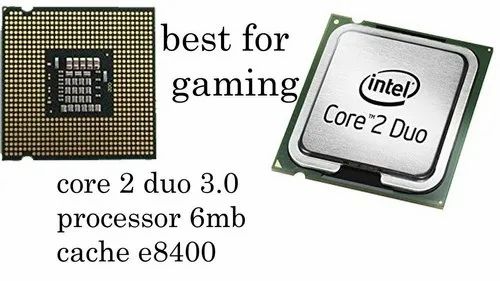 |
| i975 | Intel Celeron, Intel Pentium 4, Intel Pentium D, Intel Core 2 Duo and Intel Core 2 Quad. |
| nForce4 | Intel Celeron, Intel Pentium 4, Intel Pentium D (but not the D820), Intel Core 2 Duo. |
The BIOS
The BIOS must be able to recognize the CPU. To check whether your BIOS is compatible with a specific processor please take a look at the product page of the manufacturer of your board since it’s not possible to tell exactly which processor will run.
Basically and not always applicable: If your board supports a processor it’s likely faster/slower processors will be supported too. But, watch out you’re dealing with the same exact version (stepping).
Example: Four different versions of the 3GHz Intel Pentium 4 exist (Intel Pentium 4 530, different revisions). The Intel Pentium 4 531 even exists in two models, the E0 and the G1.
The VRD
VRD stands for Voltage Regulation Down. In easy words this third part will be about delivering the correct voltage to your processor.
In easy words this third part will be about delivering the correct voltage to your processor.
Basically I will discuss VRD10.1 and VRD11. The last one is required to run Intel Core 2 Duo processors. If your board (like the Intel D975X Rev. 0302 ‘Bad Axe’) does meet the first two requirements but doesn’t have the correct VRD version the CPU won’t run. Even if the BIOS will allow you to correct voltage settings manually!
VRD10.1 is needed for processors like the Intel Celeron, Intel Pentium 4 and Intel Pentium D. VRD11 is the minimum for Intel Core 2 processors. Of course it’s backwards compatible which means that the ‘VRD10.1’-processors will run with VRD11 too.
What is the difference between VRD10.1 and VRD11?
Both VRD10.1 and VRD11 are able to deliver voltages between 0.8375V and 1,6V. The big difference (which is actually small) can be seen in the steps between the voltages. VRD10.1 can take steps of 12.5mV. VRD11 is able to take smaller steps, namely 6. 25mV.
25mV.
Final words
Always check the product page of the manufacturer of your board. If you can’t find a list of supported processors it’s hard to tell whether a processor will function or not. If you can’t find a list of supported processors check out if the chipset is compatible and search for information on the Internet. If you see someone on the Internet running an Intel Core 2 Duo E6300 you can be pretty sure an Intel Core 2 Duo E6400, E6600 and E6700 will run too as they are technically pretty much the same. Still be careful to check the technical specifications and be sure the FSB and stepping are the same.
motherboard — What are the «compatibility classes» among LGA775 CPUs?
When it comes to Socket 775 CPU support, there are four things you need to have in order for your CPU to work flawlessly in any given motherboard:
- Sufficient or higher TDP Limit
- Sufficient or higher BIOS Revision
- Correct Chipset
- Sufficient or higher FSB speed
Your motherboard supports at least a TDP of 115W, given it lists the P4-672 on ASUS’s supported CPUs page.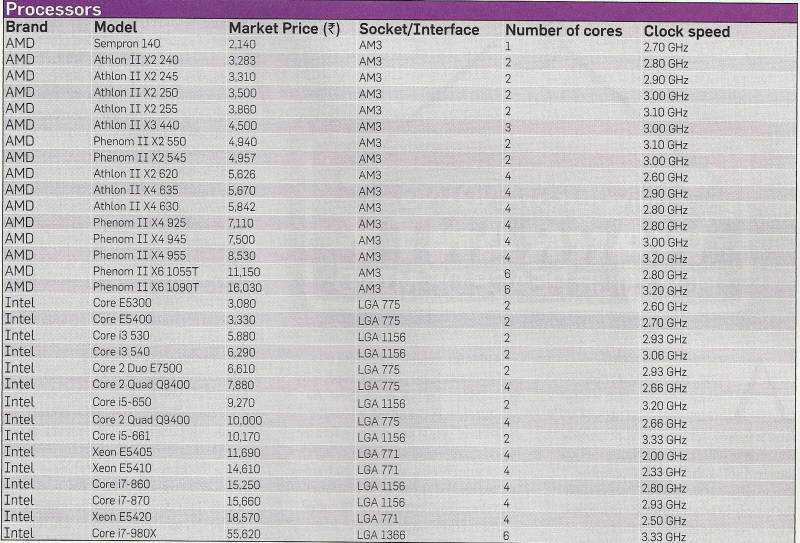 Conservatively, we will use this as our upper bound on acceptable TDP. We need to be careful here because while it may be possible to put a CPU with a higher TDP than this into your board and have it run, it may also do damage to the board, ultimately rendering your system inoperable.
Conservatively, we will use this as our upper bound on acceptable TDP. We need to be careful here because while it may be possible to put a CPU with a higher TDP than this into your board and have it run, it may also do damage to the board, ultimately rendering your system inoperable.
Only you can determine your BIOS revision, but luckily this is not hard to do — you can check was BIOS revision you have, then go through ASUS’ approved method of flashing the BIOS (if necessary) to the most recent revision: 1015.
The chipset of your motherboard is, per ASUS, the Intel 915G Express. As @harrymc stated in the comments, www.cpu-upgrade.com is a wonderful, inerrant source on this sort of thing, and that site provides us with a much-expanded support list for that chipset. This site operates quite a bit on experimentally verified information, using a wiki-like approach; if you see a green checkmark next to a CPU listing, that means it was actually physically attempted and succeeded.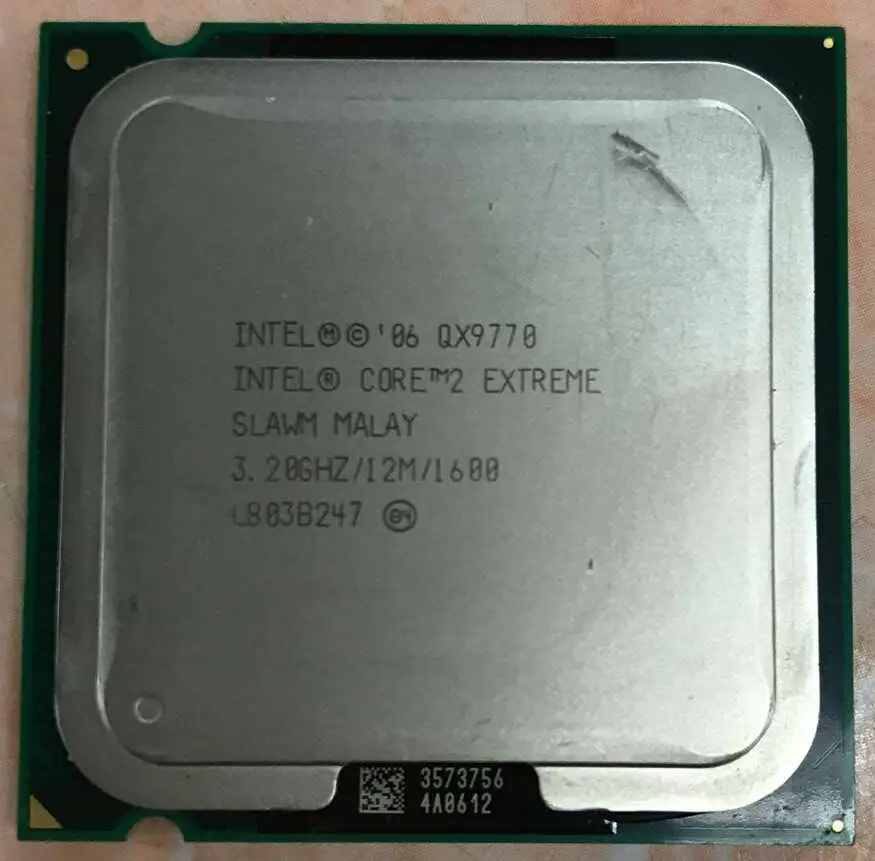 Experiment like this does leave lacuna, but overall, the lists are very complete. Additionally, because the site exists for people looking to upgrade, you can bet that people will be trying all the potential CPUs which are possibly the best on a given chipset, because that would be the best thing to find.
Experiment like this does leave lacuna, but overall, the lists are very complete. Additionally, because the site exists for people looking to upgrade, you can bet that people will be trying all the potential CPUs which are possibly the best on a given chipset, because that would be the best thing to find.
The support list also resolves our last problem — only 800mhz FSB or lower CPUs are listed. The last BIOS udpate, while not listed on that series of supported CPUs, is from 2007, which pretty well puts a limit on what might work on your system — and the few Allendale dual core pentiums that might in theory work on your socket probably won’t due to large architecture differences which would prevent them from playing nice with your chipset.
The most performative CPU for you, without taking into consideration overclocking, would therefore be the Intel Pentium 4 672. At 3.8ghz with HT, 64-bit OS support, and 2mb of L2 cache, it seems to me the best possible option.
Anecdote Time: Pentium D’s may work, because they are basically two P4’s bolted together, but I don’t think it is likely. In any case, they wouldn’t offer much additional performance over the best proven option. They might also run at a reduced capacity; I have had a situation on 775 before where I was able to kinda-sorta run a Core 2 Quad 8200 on a system that previously had an older Core 2 Duo in it, but because the BIOS microcode didn’t know about that chip it wasn’t able to fully utilize its capabilities, and the system ran slower than it should have. More specifically, I didn’t even get to the point of checking how things ran in an OS — the POST was so painfully slow that I cancelled all attempts to move forward with the install and simply replaced it with an older core 2. I believe it was running at a lower than usual frequency and not all of its cache was recognized, or something along those lines. I also got an annoying little message from the BIOS it every time I booted.
Regarding your specific inquiry about Cedar Mill. Cedar Mill is actually just a die-shrink of the same Netburst architecture. If you use the resources I gave you, you can see that while your chipset supports those chips, your motherboard doesn’t. This is most likely due to microcode updates needing to be made to the BIOS which were not made by Asus. To me that says in all likelihood they should run in your computer. You may get issues about it during POST, though.
Processors on socket 775: list and table of models
Hello, dear guests or readers! The LGA 775 socket (or the so-called Socket T) was very popular at one time. Intel has created many CPUs based on it, both top-end and not very productive. In today’s post, we will look at processors on socket 775: a list, brief characteristics, a table by model, which one is the best.
A bit about socket 775
The first devices supporting this slot went on sale in 2004. The socket was a connector with spring-loaded contacts, to which the CPU was attached using a holder equipped with a lever that holds the locking plate.
The “stone” itself did not have pin contacts that could be accidentally broken during installation, which is definitely a plus.
In terms of efficiency, the bus used was inferior to AMD analogs of that period, but, unlike the development of the main competitor, it was scalable. In addition, the Pentium 4, Celeron, Pentium Dual-Core, and Core 2 Duo CPUs lacked a memory controller.
This allowed new CPUs to use the old bus by overclocking it. Ceteris paribus, memory and cache efficiency is lower than AMD.
The high power consumption of the FB-DIMM memory, which was planned to be further developed to work in conjunction with Intel «stones» on socket 775, forced the manufacturer to abandon it in favor of DDR III.
New devices with this slot are no longer available today. If you are planning to upgrade an old computer based on a motherboard that supports such CPUs, you will have to be content with illiquid or used devices.
Which processors fit the lga775 slot
Quad-core Xeon
Xeon is the name of the line of server solutions from Intel, which remains unchanged for several generations of devices, so it can be connected using different sockets. These CPUs became the prototype of the modern Core i5.
If we give a brief description, then Xeons differ from desktop versions in an increased cache size and support for multiprocessor high-performance systems.
The Xeon X, E and L series are based on the Nehalem architecture introduced by the manufacturer in 2008. There is no fundamental difference between the server CPUs that fit this socket, as well as between the series.
| Xeon X | clock (GHz) | cache(MB) | bus(MHz) |
| X3210 | 2.13 | 8 | 1066 |
| X3220 | 2.4 | ||
| X3230 | 2. 67 67 |
||
| X3323 | 2.5 | 6 | 1333 |
| X3353 | 2.67 | 12 | |
| X3360 | 2.83 | ||
| X3363 | 2.83 | ||
| X3370 | 3 | ||
| X5355 | 2.67 | 8 | |
| X5365 | 3 | ||
| X5450 | 3 | 12 | |
| X5460 | 3.17 | ||
| X5470 | 3.33 | ||
| X5472 | 3 | 1600 | |
| X5482 | 3.2 | ||
| X5492 | 3.4 |
| Xeon E | clock (GHz) | cache(MB) | bus(MHz) |
| E5345 | 2.33 | 8 | 1333 |
| E5410 | 2. 33 33 |
12 | |
| E5420 | 2.5 | ||
| E5430 | 2.67 | ||
| E5440 | 2.83 | ||
| E5450 | 3 | ||
| E5462 | 2.8 | 1600 | |
| E5472 | 3 |
| Xeon L | clock (GHz) | cache(MB) | bus(MHz) |
| L5408 | 2.13 | 12 | 1066 |
| L5410 | 2.33 | 1333 | |
| L5420 | 2.5 | ||
| L5430 | 2.67 |
Core 2 Extreme and Core 2 Quad
The first Core 2 Quad was introduced in 2007. It was created using the 65 nm process technology on the Kentsfield core. Core 2 Extreme — overclocked modifications of the processors of this series, which had an unlocked multiplier and at that time an extremely high clock speed.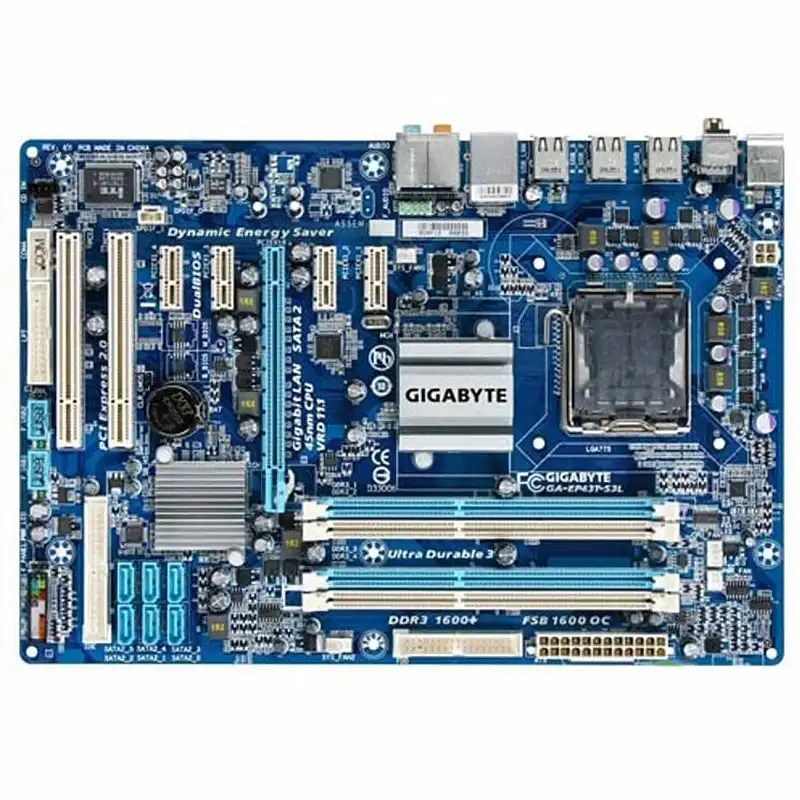
As you can see from the table, the difference is only in the clock speed, cache and supported memory frequency. Consider the last parameter, since for maximum assembly efficiency, the motherboard must also match it.
| Core 2 Extreme QX | clock (GHz) | cache(MB) | bus(MHz) |
| QX6700 | 2.66 | 8 | 1066 |
| QX6800 | 2.93 | ||
| QX6850 | 3 | 1333 | |
| QX9650 | 3 | 12 | |
| QX9770 | 3.2 | 1600 |
All models, starting from the Q8200, were already built on the Yorkfield core using the 45 nm process technology. I would especially like to highlight the Core 2 Extreme QX6800 in this line — although it is not the fastest among others, it has the highest multiplier — 11.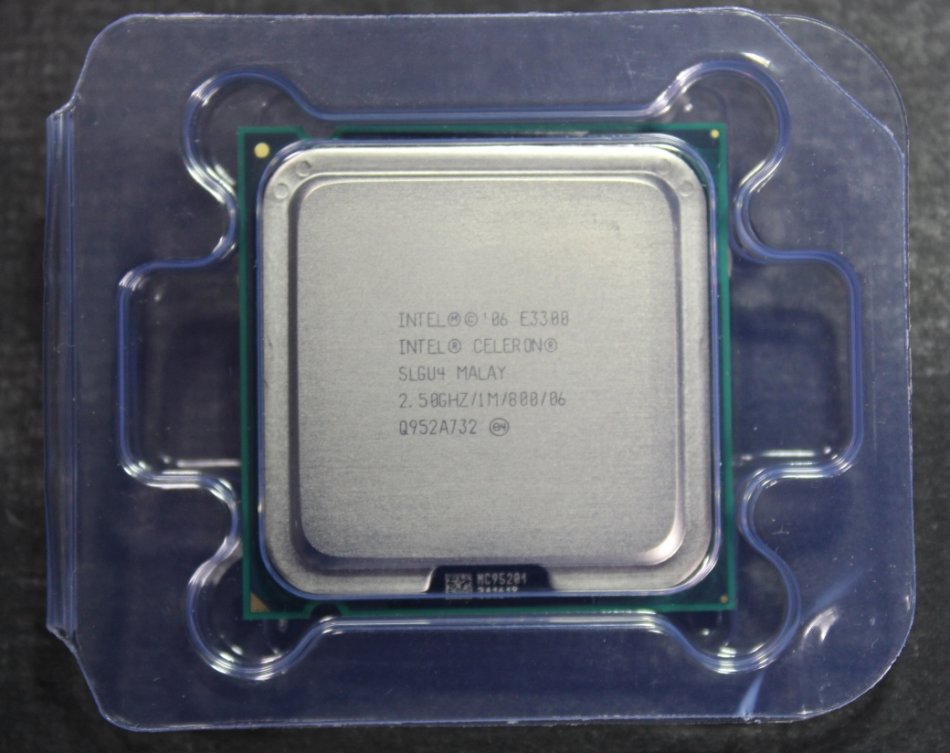
| Core 2 Quad Q | clock (GHz) | cache(MB) | bus(MHz) |
| Q6700 | 2.66 | 8 | 1066 |
| Q8200 | 2.33 | 4 | 1333 |
| Q8200s | 2.33 | ||
| Q8300 | 2.5 | ||
| Q8400 | 2.66 | ||
| Q8400s | 2.66 | ||
| Q9300 | 2.5 | 6 | |
| Q9400 | 2.66 | ||
| Q9400s | 2.66 | ||
| Q9450 | 2.66 | 12 | |
| Q9500 | 2.83 | 6 | |
| Q9505 | 2.83 | ||
| Q9505s | 2.83 | ||
| Q9550 | 2.83 | 12 | |
| Q9550s | 2. 83 83 |
||
| Q9650 | 3 |
Perhaps the intel core 2 quad for socket 775 is the best option if you could not find a Pentium or Xeon. I also advise you to pay attention to the processors that fit the lga 1151 socket.
Dual-core Xeon
A line of «cut down» server solutions with «simpler» characteristics. If you select a “stone” not by power, but if possible, get a device with an outdated socket, it’s also completely fine, besides, the price is even lower.
| Xeon X | clock (GHz) | cache(MB) | bus(MHz) |
| X5270 | 3.5 | 6 | 1333 |
| X5270 | 3.4 | 1600 | |
| X5260 | 3.33 | 1333 |
| Xeon LV | clock (GHz) | cache(MB) | bus(MHz) |
| Lv 5148 | 2. 33 33 |
4 | 1333 MHz |
| Lv 5128 | 1.86 | 1066 MHz |
| Xeon L | clock (GHz) | cache(MB) | bus(MHz) |
| L5248 | 3 | 6 | 1333 |
| L5240 | 3 | ||
| L5238 | 2.66 |
| Xeon E | clock (GHz) | cache(MB) | bus(MHz) |
| E5240 | 3 | 6 | 1333 |
| E5230 | 1.86 | 1066 | |
| E5200 | 2.33 | 1333 |
| Xeon | clock (GHz) | cache(MB) | bus(MHz) |
| 5160 | 3 | 4 | 1333 |
| 5150 | 2. 66 66 |
||
| 5140 | 2.33 | ||
| 5130 | 2 | ||
| 5120 | 1.86 | 1066 | |
| 5110 | 1.6 | ||
| 5080 | 3.73 | ||
| 5063 | 3.2 | ||
| 5060 | 3.2 | ||
| 5050 | 3 | 667 | |
| 5030 | 2.66 |
Pentium Extreme Edition
A line that has been in production since 2003. Perhaps, «Stump» is the most famous of the processors, the name of which has already become a meme. «Extreme» modifications are designed mainly for overclocking enthusiasts. These are the most expensive in their family and the most powerful devices.
| Pentium Extreme Edition | clock (GHz) | cache(MB) | bus(MHz) |
| 965 | 3.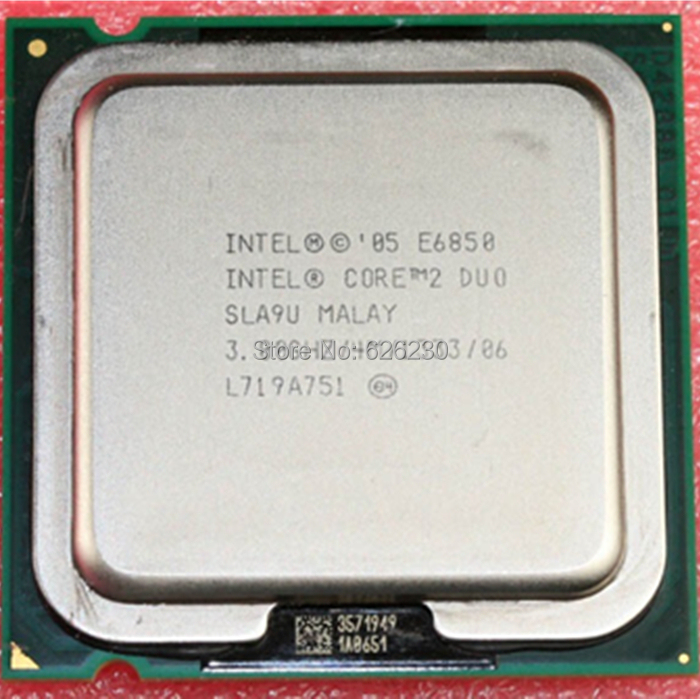 73 73 |
4 | 1066 |
| 955 | 3.46 | ||
| 840-XE | 3.2 | 2 | 800 |
Pentium Dual-Core
Microprocessors manufactured from 2006 to 2009. They also work great with an increase in the system bus frequency to 266 MHz (overclocking by 1.33 times), and some of them even at a higher one.
| Pentium Dual-Core E | clock (GHz) | cache(MB) | bus(MHz) |
| E6800 | 3.33 | 2 | 1066 |
| E6700 | 3.2 | ||
| E6600 | 3.06 | ||
| E6550 | 2.93 | ||
| E6300 | 2.8 | ||
| E5800 | 3.2 | 800 | |
| E5700 | 3 | ||
| E5500 | 2.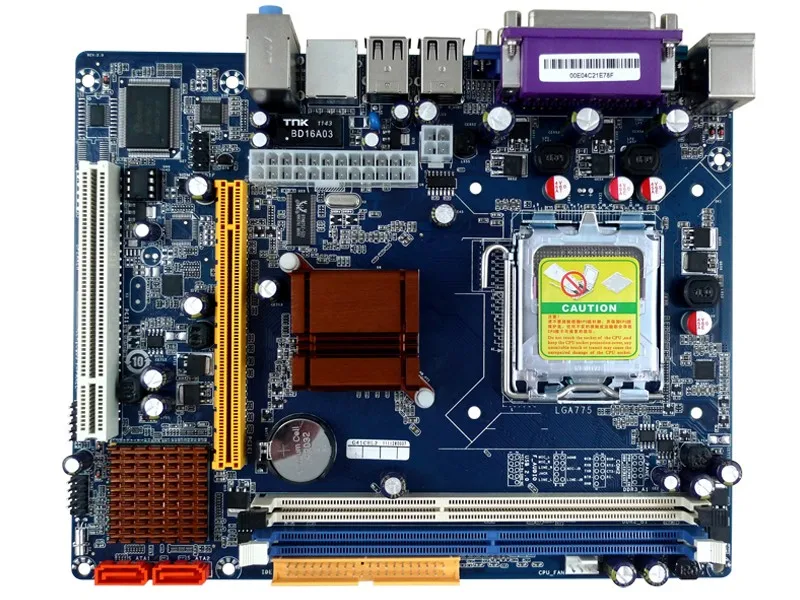 8 8 |
||
| E5400 | 2.7 | ||
| E5300 | 2.6 | ||
| E5200 | 2.5 | ||
| E2200 | 2.2 | 1 | |
| E2160 | 1.8 | ||
| E2140 | 1.6 | ||
| E2200 | 2 |
Pentium D
A Pentium 4 series developed by a research center in Israel. They have two cores and x86-64 architecture. Produced from 2005 to 2008.
| Pentium D | clock (GHz) | cache(MB) | bus(MHz) |
| D 960 | 3.6 | 4 | 800 |
| D 950 | 3.4 | ||
| D945 | 3.4 | ||
| D 940 | 3.2 | ||
| D 935 | 3.2 | ||
| D 930 | 3 | ||
| D 925 | 3 | ||
| D 920 | 2. 8 8 |
||
| D 915 | 2.8 | ||
| D 840 | 3.2 | 2 | |
| D 830 | 3 | ||
| D 820 | 2.8 | ||
| D 805 | 2.66 | 533 |
Core 2 Duo
Manufactured from 2006 to 2011. 64-bit CPUs based on the 45nm Core core. The E index in the marking means that the heat dissipation of the CPU is at least 50 watts.
| Core 2 Duo E | clock (GHz) | cache(MB) | bus(MHz) |
| E8600 | 3.33 | 6 | 1333 |
| E8500 | 3.16 | ||
| E8400 | 3 | ||
| E8300 | 2.83 | ||
| E8200 | 2.66 | ||
| E8100 | 2.66 | ||
| E7600 | 3.06 | 3 | 1066 |
| E7500 | 2.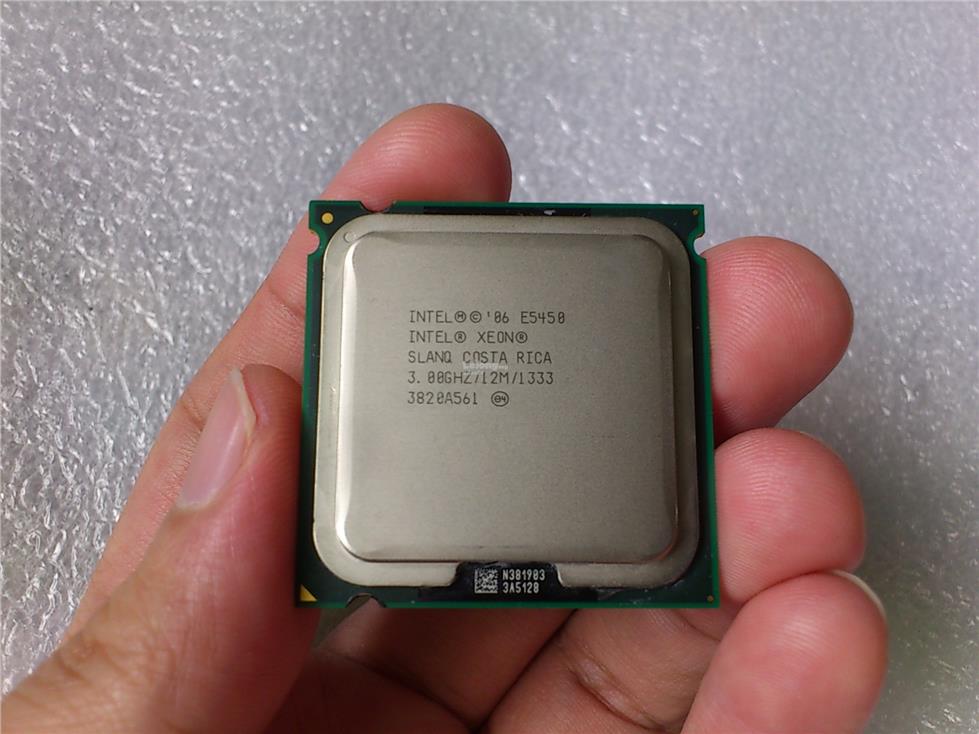 93 93 |
||
| E7400 | 2.8 | ||
| E7300 | 2.66 | ||
| E7200 | 2.53 | ||
| E6850 | 3 | 4 | 1333 |
| E6750 | 2.66 | ||
| E6700 | 2.66 | 1066 | |
| E6600 | 2.4 | ||
| E6550 | 2.33 | 1333 | |
| E6420 | 2.13 | 1066 | |
| E6350 | 1.86 | ||
| E6300 | 1.86 | 2 | |
| E4700 | 2.6 | 800 | |
| E4600 | 2.4 | ||
| E4500 | 2.2 | ||
| E4400 | 2 | ||
| E4300 | 1.8 |
Celeron Dual-Core E
The dual-core version of the popular device family.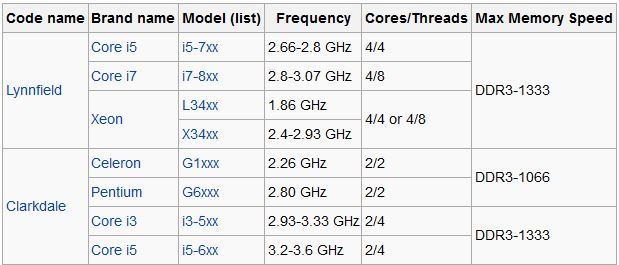 Compared to single-core models, they have slightly improved parameters.
Compared to single-core models, they have slightly improved parameters.
| Celeron Dual-Core E | clock (GHz) | cache(MB) | bus(MHz) |
| E3500 | 2.7 | 1 | 800 |
| E3400 | 2.6 | ||
| E3300 | 2.5 | ||
| E3200 | 2.4 | ||
| E1600 | 2.4 | 512 KB | |
| E1520 | 2.2 | ||
| E1400 | 2 | ||
| E1200 | 1.6 |
Pentium 4
A single core x86 compatible microprocessor that was introduced in 2000. This model uses the NetBurst architecture for the first time. There are modifications for other sockets, so check the table. The Extreme Edition series differs only in overclocking capability.
| Pentium 4 | clock (GHz) | cache(MB) | bus(MHz) |
| 650 | 3. 4 4 |
2 | 800 |
| 641 | 3.2 | ||
| 640 | 3.2 | ||
| 631 | 3 | ||
| 630 | 3 | ||
| 571 | 3.8 | 1 | |
| 570J | 3.8 | ||
| 561 | 3.6 | ||
| 560/560J | 3.6 | ||
| 551 | 3.4 | ||
| 550j | 3.4 | ||
| 550 | 3.4 | ||
| 540/541 | 3.2 | ||
| 531 | 3 | ||
| 530/530J | 3 | ||
| 524 | 3.06 | 533 | |
| 521 | 2.8 | 800 | |
| 520 | 2.8 | ||
| 519K | 3.06 | 533 | |
| 516 | 2.93 | ||
| 506 | 2. 66 66 |
||
| 505J | 2.66 |
Celeron and Celeron D
A large family of low-cost single-core x86 compatible processors from Intel. They were positioned as «stripped down» versions of older models. Due to the reduction in clock frequency and the blocking of the second-level cache memory, they were more affordable.
| Celeron D | clock (GHz) | cache(MB) | bus(MHz) |
| D 365 | 3.6 | 512 | 533 |
| D 360 | 3.46 | ||
| D 356 | 3.33 | ||
| D 355 | 3.33 | 256 | |
| D 352 | 3.2 | 512 | |
| D 351 | 3.2 | 256 | |
| D 346 | 3.06 | ||
| D 345J | 3.06 | ||
| D 341 | 2. 93 93 |
||
| D 340J | 2.93 | ||
| D 336 | 2.8 | ||
| D 335J | 2.8 | ||
| D331 | 2.66 | ||
| D330J | 2.66 | ||
| D 326 | 2.53 | ||
| D 325J | 2.53 |
| Celeron | clock (GHz) | cache(MB) | bus(MHz) |
| 440 | 2 | 512 | 800 |
| 430 | 1.8 | ||
| 420 | 1.6 |
The line is produced to this day, and as many as 10 sockets are used in it — from the “ancient” Slot1 to the completely modern LGA 1151.
That’s all. Also, the publications “Processors that fit the socket AM3” and “What is the difference between an i3 processor and an i5 processor” may be useful for you. I would be grateful to everyone who shares this post on social networks. Till tomorrow!
I would be grateful to everyone who shares this post on social networks. Till tomorrow!
Sincerely, author Andrey Andreev.
Socket 775: processor socket is a long-liver
Socket 775 is a long-liver by computer standards. It was announced back in 2004, and its receiver in the face of LGA 1156 appeared in 2009-m. By the standards of the semiconductor industry, 5 years is a whole era. During this period, this computing platform has continuously evolved and constantly offered new solutions. At the moment it is, of course, outdated. But computers based on it are still actively exploited and allow solving the simplest tasks in terms of complexity.
Start of sales of the computer platform, its development
In 2004, the Socket 478 processor socket has exhausted all possibilities for further development from a technical point of view. A new socket was also needed that would support 64-bit information processing technologies instead of 32-bit calculations that were outdated at that time. Based on these two nuances, manufacturers announced sales of computer components for Socket 775. Another important feature of the platform was that several computing modules could be on one semiconductor chip at once. Their largest number in this case could reach 4.
Based on these two nuances, manufacturers announced sales of computer components for Socket 775. Another important feature of the platform was that several computing modules could be on one semiconductor chip at once. Their largest number in this case could reach 4.
Sets of system logic from Intel
Four generations of system logic from Intel could underlie such a computer component for the LGA 775 as a motherboard. Socket 775 supported such proprietary chipsets as:
- I8XX — the first chipsets for this platform. They had a lot in common with their predecessors for «Socket 478». Later versions of processors for «Socket 775» were not supported by them due to low clock frequencies of the system bus.
- I9XX is the first update of the LGA 775 chipset line. In this case, the system bus frequencies have increased. But support for the most productive dual- and quad-core CPUs was still out of the question.
- X3X — these products were released almost simultaneously with the first Core 2 CPUs of the Duo (with 2 cores) and Quad (4 cores) lines.

- X4X is the latest generation of the highest performing chipsets for this platform with the highest possible performance in this case.
Third-Party Chipsets
This platform is essentially the last in the list of those for which chipsets were produced by third-party companies. Starting with LGA 1156, Intel has monopolized this area for its solutions. Therefore, it was possible to find motherboards based on chipsets from 4 other development companies in the list of offers from such a well-known manufacturer as Asus 775. The socket for these CPU models was supported by the following chipset models:
- SIS offered 64X, 65X, 66X and 67X semiconductor products for the LGA 775. Each of them appeared after updating products from the Intel development company. Their level of functionality was similar to her chipset generations.
- VIA also offered its solutions for the LGA775. The first of these was the PT800/PM800. The last of them is R4M900.

- Chipsets from ATI were also produced for this processor socket. There were only three of them: Xpress 200, Xpress 1250 and Xpress 3200. The name of the last of them also contained the word crossfire. That is, this chipset made it possible to create very productive graphic stations with several video accelerators.
- The last manufacturer in this case is NVidia. The list of solutions included products belonging to the NForce 4, NForce 5XX, NForce 6XX, NForce 7XX and NForce 9 lines.
RAM
Socket 775, unlike most modern computing platforms, was based on a layout of 2 chips. They were part of the system logic. The northbridge included a RAM controller. He was external. And such an engineering approach reduced the performance of a computer system. But, on the other hand, it allowed, at minimal cost, to rebuild the motherboard to use newer and more advanced RAM. As a result, both DDR2 and DDR3 could be found in such PCs. The maximum amount of this important resource in a PC could reach 4 GB, and only one type of RAM could be used.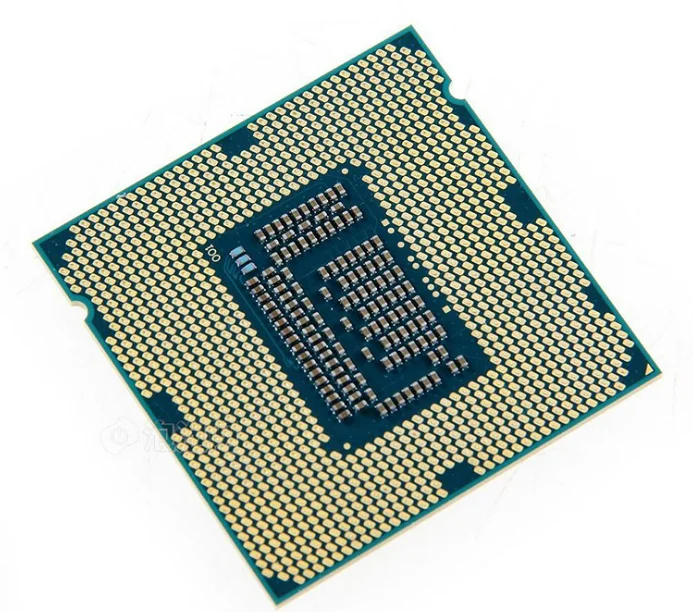
Processor Models
An impressive list of chips has been released for 775 Socket. The processors of the following models could be found in such PCs:
- The least productive systems were based on CELERON chips. They could be either with 1 computing unit or with two. Modest technical parameters (low clock speeds, small cache memory) allowed them to be used only as part of office PCs.
- PENTIUM line CPUs were one step up. They were also single- or dual-core in terms of the number of cores. But the increased cache size and higher frequencies made it possible to obtain a significant increase in performance. They could be found even in entry-level gaming systems.
- Mid-range solutions included Core 2 chips with the Duo prefix. They without fail already had 2 computing units and an improved architecture. This allowed them to be used as part of mid-range gaming computers.
- Representatives of the Core 2 line also provided the highest level of performance.

